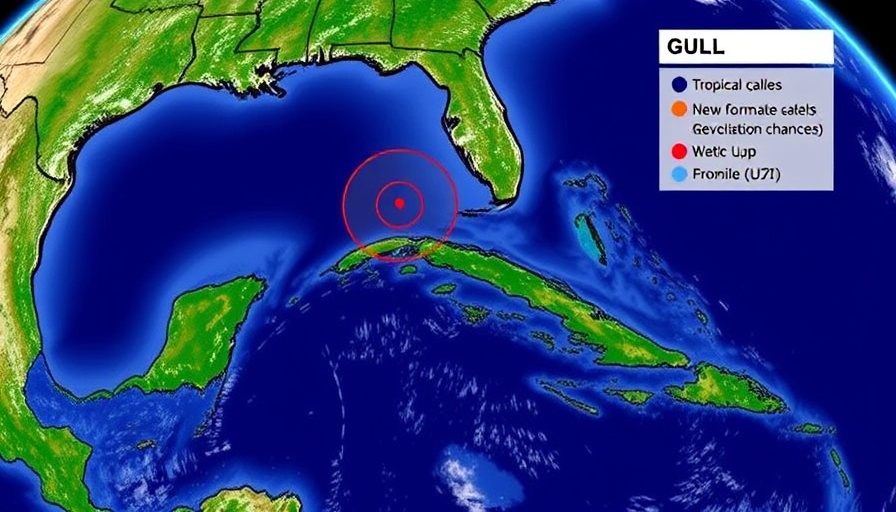
An Increase in Tropical Development Chances in the Gulf
As the 2025 hurricane season unfolds, the anticipation of tropical developments is beginning to rise, particularly in the Gulf of Mexico. Just days after Tropical Storm Andrea made headlines as the first named storm of the season, meteorologists from the National Hurricane Center (NHC) report a new potential system forming in the Bay of Campeche.
Understanding the Current Situation
The NHC recently noted an area of showers and thunderstorms escalating in the northwestern Caribbean Sea, prompting interest among storm watchers. The system appears to be moving west-northwest and is expected to continue in this path through the weekend. The forecast currently suggests a modest 10% chance of tropical development within the next 48 hours, increasing to 20% over the following week.
What's Next for Florida?
Despite this potential development, meteorologists believe that if the system does strengthen, it is unlikely to pose a threat to Florida. This is a reassuring note for residents, who know all too well the havoc storms can wreak on communities in the Gulf region. Keeping an eye on the NHC updates is essential, as they will inform residents about the storm's trajectory and intensity.
Tropical Patterns: A Historical Perspective
Historically, the tropical Atlantic sees its first named storm around June 20, with hurricanes typically starting to form by mid-August. This seasonal pattern remains crucial for residents along the Gulf Coast, as earlier storms can herald a more active hurricane season. With the first named storm of this year occurring on June 25 and already dissipating, the attention turns toward tracking any subsequent developments.
Preparing for the Hurricane Season
As hurricane season runs through November 30, having a preparedness plan is vital. Communities across the Gulf have been gearing up, conducting drills and ensuring shelters are ready. These exercises are essential for helping residents understand what actions to take when a storm approaches. The Seminole County’s recent full-scale hurricane shelter exercise exemplifies this proactive approach in storm readiness.
Stay Informed Amid Uncertainty
As residents gear up for the possibility of tropical storms, the importance of keeping informed cannot be overstated. Having access to reliable weather updates and local advisories allows communities to proactively address changes in storm conditions. One must stay updated through trusted weather channels, ensuring they are prepared to mitigate any potential impact from tropical systems.
The Road Ahead: What Lies in Store?
Looking ahead, the possibility of increased tropical activity may lead to further storms developing in the coming weeks. The next named storm, Barry, is anticipated to join the list sooner rather than later if these patterns continue. Monitoring current weather systems and engaging with local news keeps communities well-informed to respond effectively.
In summary, while there's heightened anticipation for tropical developments in the Gulf, preparedness and state of alert are crucial. Engaging with local updates enhances community resilience and safety. The approaching weeks will be telling, as hurricane season may bring both challenges and opportunities for readiness along the Gulf Coast.
 Add Row
Add Row  Add
Add 




Write A Comment